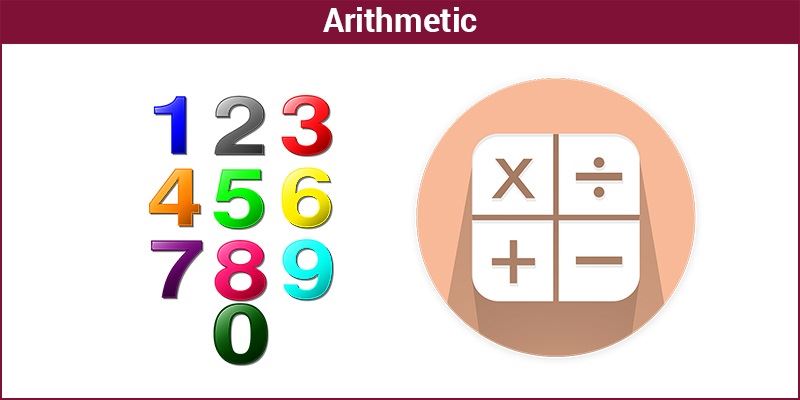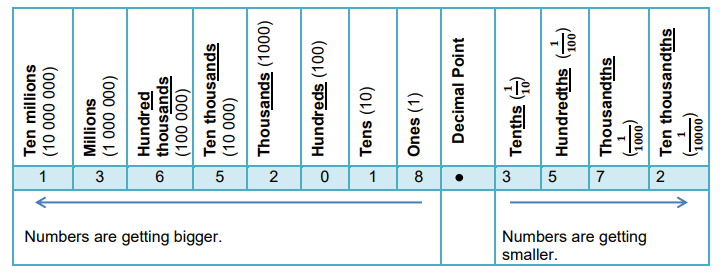Place Values
The value of a digit depends on its place in the Place Value Chart. Numbers to the left of the decimal point represent whole numbers and numbers to the right of the decimal point represent parts of a whole number.
For example, money consists of wholes and parts. Whole dollars ($) are to the left of the decimal point and cents (¢) (parts of a dollar) are to the right of the decimal point.
Place Value Chart
Note: Numbers to the right of the decimal end in “ths” and numbers to the left of the decimal mostly end in “ands” and “eds”.
Example 1:
The number 52 can be broken down into five (5) tens and two (2) ones.
52 = 5 tens + 2 ones 52 = 5 x 10 + 2 x 1
Example 2:
The number 10 568 can be broken down into one (1) ten thousand, zero (0) thousands, five (5) hundreds, six (6) tens and eight (8) ones.
10568 = 1 ten thousand + 0 thousand + 5 hundreds + 6 tens + 8 ones
10568 = 1 x 10 000 + 0 x 1000 + 5 x 100 + 6 x 10 + 8 x 1
Example 3:
The dollar amount $472.65 can be broken down into four (4) hundred dollar bills, seven (7) ten dollar bills, two (2) loonies, six (6) dimes and five (5) cents (or one nickel). $472.65 = 4 hundred dollar bills + 7 ten dollar bills + 2 loonies + 6 dimes and 5 cents (or 1 nickel)
$472.65 = 4 x 400 + 7 x 10 + 2 x 1 + 6 x 0.10 + 5 x 0.01
More on AmplifyGlobe
Operations on Numbers
 The objective of this lesson is to introduce students to various operations perf Read More
The objective of this lesson is to introduce students to various operations perf Read More
If you're looking to ace your ATI TEAS test and get accepted into the nursing program of your dreams, try ExamGates today. Tutors who have taken the exam before wrote and prepared the practice questions on ExamGates. Therefore, you have 100% relevant content, vivid images and illustrations, and in-depth explanations for right and wrong answers.
